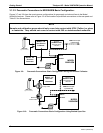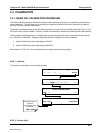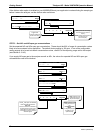
Teledyne API - Model 200EH/EM Operation Manual Getting Started
19
1. Attach a 1/4" exhaust line between the external pump exhaust port of the analyzer.
2. Attach an additional 1/4" exhaust port of the pump.
CAUTION
The exhaust from the analyzer needs to be vented outside the shelter or immediate area
surrounding the instrument and conform to all safety requirements using a maximum of
10 meters of 1/4” PTFE tubing.
3. Attach a sample inlet line to the sample inlet port. Ideally, the pressure of the sample gas should be
equal to ambient atmospheric pressure.
NOTE
Maximum pressure of any gas at the sample inlet should not exceed 1.5 in-Hg above
ambient pressure and ideally should equal ambient atmospheric pressure.
In applications where the sample gas is received from a pressurized manifold, a vent
must be provided to equalize the sample gas with ambient atmospheric pressure before
it enters the analyzer. The vented gas needs to be routed outside the immediate area
or shelter surrounding the instrument.
4. Once the appropriate pneumatic connections have been made, check all pneumatic fittings for leaks
using a procedure similar to that defined in Section 11.5.1.
3.1.3.3. Connections with Internal Valve Options Installed
If your analyzer is equiped with either the zero/span valve option (50) or the 2-span point valve option(52), the
pneumatic connections should be made as shown in figures 3-11 & 3-12:
VENT here if input
is pressurized
Source of
SAMPLE Gas
PUMP
MODEL
200EH/EM
Sample
Exhaust
Span Point
Zero Air
Calibrated NO
at HIGH Span
Concentration
Filter
External Zero
Air Scrubbe
r
VENT
MODEL 700
Gas Dilution
Calibrator
MODEL 701
Zero Gas
Generator
Figure 3-11: Pneumatic Connections–With Zero/Span Valve Option (50)
04521C (DCN5731)


















